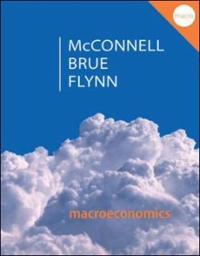Economics question
Question 3 (20 points) Consider the following decentralized real business cycle model. The representative household has preferences over consumption and leisure. Expected lifetime utility is: (1) t=0 1 - a 1 + 71/ where C is consumption and NV is hours worked. These preferences include a form of habit formation and the "habit stock", He, is simply equal to consumption in t - 1: He = Ci-1. h governs the importance of habits and 0 Sh 1 (rather than o = 1). By inspecting the relevant household equilibrium conditions from part (a), discuss how this might affect the dynamics of consumption following a TFP shock. You do not need to re- solve the model, just provide the relevant economic intuition based on the equilibrium conditions. e) Briefly explain how you would solve this model using Value Function Iteration. Make sure you mention any additional challenges that are specific to this model and how you might deal with them. For simplicity, assume labor supply is inelastic.Question 2 (20 points) Consider an economy that consists of two islands, i = {1, 2). Each island has a large population of infinitely-lived, identical agents, normalized to the unit. There is a unique consumption good, say, coconuts, which is not storable across periods. Although within each island agents have identical preferences over consumption, across islands there is a difference: Agents in island 2 are more patient. More precisely, the lifetime utility for the typical agent in island i is given by U. ((c).) = EB; In(c). 1=0 where B, E (0, 1), for all i, and By > Bi. Due to weather conditions in this coonomy, island 1 has a production of e > 0 units of coconuts in even periods and zero otherwise, and island 2 has a production of e units of coconuts in odd periods and zero otherwise. Agents cannot do anything to boost this production, but they can trade coconuts, so that the consumption of the typical agent in island i, in period t, is not necessarily equal to the production of coconuts on that island in that period (which may very well be zero). Assume that shipping coconuts across islands is costless. a) Describe the Arrow-Debreu equilibrium (ADE) allocations in this economy. You can use any method you like, but I strongly recommend that you exploit Negishi's method. b) Describe the ADE prices in this economy. c) Plot the equilibrium allocation for the typical agent in island i, i.e., {Clien, i = {1,2), against t. Is there any period t in which & = @? If yes, please provide a closed form solution for that value of t.*








